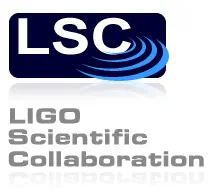
Abstract
We analyzed the available LIGO data coincident with GRB 070201, a short-duration, hard-spectrum γ-ray burst (GRB) whose electromagnetically determined sky position is coincident with the spiral arms of the Andromeda galaxy (M31). Possible progenitors of such short, hard GRBs include mergers of neutron stars or a neutron star and a black hole, or soft γ-ray repeater (SGR) flares. These events can be accompanied by gravitational-wave emission. No plausible gravitational-wave candidates were found within a 180 s long window around the time of GRB 070201. This result implies that a compact binary progenitor of GRB 070201, with masses in the range 1 M☉ < m_1 < 3 M☉ and 1 M☉ < m_2 < 40 M☉, located in M31 is excluded at >99% confidence. If the GRB 070201 progenitor was not in M31, then we can exclude a binary neutron star merger progenitor with distance D < 3.5 Mpc, assuming random inclination, at 90% confidence. The result also implies that an unmodeled gravitational-wave burst from GRB 070201 most probably emitted less than 4.4 × 10^-4 M☉c^2 (7.9 × 10^50 ergs) in any 100 ms long period within the signal region if the source was in M31 and radiated isotropically at the same frequency as LIGO’s peak sensitivity (f ≈ 150 Hz). This upper limit does not exclude current models of SGRs at the M31 distance.